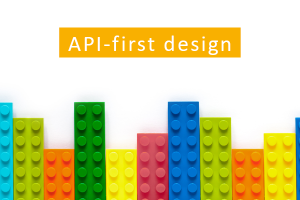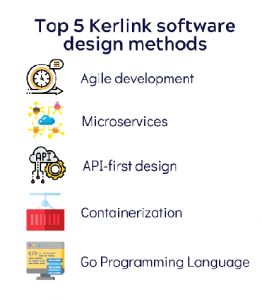The untold story: how Kerlink’s mastery of software-development best practices delivers critical benefits to customers. Part 3, API-first design

By Stephane Dejean – Kerlink CMO
Part 3 of our five-part series explains how Kerlink’s API-first design component accelerates time-to-market for customer solutions and eases their integration and launch
Kerlink is widely recognized for its highly reliable connected hardware and for the quality, robustness and all-around performance of its Wirnet LoRaWAN network-infrastructure solutions. Kerlink was the first provider of commercial, carrier-grade gateways and recently extended its premier industrial-grade iSeries with new indoor and outdoor products.
As a full-service, turnkey Internet of Things (IoT) solutions provider, the company also offers proven quality software development. With particular expertise in network management, orchestration solutions and value-added services such as geolocation and remote device management, Kerlink has more than 120,000 installations with more than 330 clients in 69 countries. The quality of its software is increasingly being recognized by demanding and experienced industrial users.
The selection, adoption and mastery of software-development best practices drive Kerlink’s business model and the richness of its service portfolio.
Not only are these IoT solutions perfectly synchronized with the latest LoRaWAN specifications, they also leverage the flexible, efficient and open methods of software design and management to meet the scalability, security and usability requirements of Kerlink’s customers worldwide.

The series:
- Method 1: Agile Development – March 19
- Method 2: Microservices – March 26
- Method 3: API-first Design – April 2
- Method 4: Containerization – April 9
- Method 5: Go Programming Language and Direct Benefits to Customers – April 16
In this five-part series, we will explain our top software design & development methods that benefit our customers and show that the company is at the forefront of software design, development methods and architectures.
Part 3: API-First Design
An application programming interface (API) is a protocol that simplifies building connections between clients and servers. Kerlink, its customers and its partners benefit from API-first design, because it shortens the overall solution time-to-market and eases the integration and launching of new solutions.
Our API-first approach provides a highly open architecture with many points for adding new features. It also allows easy integration with multiple systems and applications.This avoids enterprises creating data silos in existing solutions or limiting the use of data to a subset of services.
Kerlink’s customers are the primary beneficiaries of the company’s well-documented and supported APIs.
Kerlink elected an API-first development method at an early stage in its history, because it prioritizes interconnectability of and excellent user experience (UX) for all its hardware and software.
Easy and efficient integration
We often recommend that customers and partners use APIs as the primary means of completing data integration and routing for any application we offer. And Kerlink strives to make this integration process easy and efficient. Our external APIs are published in OpenAPI format and documented to make them usable via an open-source tooling ecosystem, for example, to automatically generate a remote query client in multiple languages. Kerlink invests extensive time in API design, exposure, detailed documentation and maintenance. The API-first approach focuses on maximum openness and exposure of all the application services to a customer.
As a side benefit, an API-first design also benefits Kerlink’s customers that choose to integrate using Kerlink-provided user interfaces (UIs). A UI is a subset of the integrations available in a vendor’s APIs. As such, those vendors that prioritize UI development at the expense of APIs invariably have closed, proprietary systems that are not easily integrated to third-party solutions. An API-first approach, like the one adopted by Kerlink, ensures a tight coupling of the functionality offered in the UI and the set of APIs openly made available to customers, thereby saving customers integration and implementation time and money.
Hardware & Software that ensure Interoperability throughout the IoT chain
The choices made in Kerlink’s methods, architectures and support tools illustrate the company’s maturity and innovation in software design, deployment management and operations management in highly demanding customer environments. Kerlink believes in providing open, interoperable and reversible solutions matched to industry standards to provide exceptional customer experience and ensure the ongoing development of its solutions to support customers’ growing and evolving businesses.
Kerlink’s hardware and software expertise ensures interoperability of all functional components of the IoT chain, including embedded gateway software and server-side applications
Customers have come to rely on Kerlink’s expertise in the design of infrastructure and applications to support IoT network management and low-power wide-area (LPWA) private and public networks, in particular.
Continuous production releases
Kerlink’s choice of agile development, microservices architecture, API-first design, containerization and Go programming language has strengthened Kerlink’s IoT solution-development efforts. And we have shared these benefits with our valued customers by providing the ability to deploy a Kerlink solution in minutes, minimize risks throughout IoT solution-operations management, control IoT solution costs at a refined level and decrease deployment time.
By allowing continuous production releases, Kerlink enables its customers to benefit from rapid advancements in applications, management tools and platforms. These advancements improve the speed at which enterprises can design, deploy and support their IoT solutions. A software-design framework allows Kerlink to develop a set of automated operations tools to foster fast, reliable and flexible delivery of solutions for its customers.
Next week: Containerization


